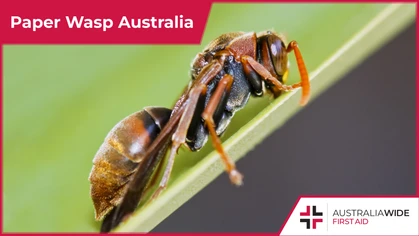The Blue Belly Black Snake

Bites and Stings

The Blue belly black snake is common along parts of Australia's eastern coast. They are highly toxic, as their venom can cause muscle death, cell death, as well as disrupt the nervous system.
The Blue belly black snake occurs across parts of Australia's eastern coast. They can vary widely in their identifying characteristics, which is why they are sometimes misidentified as Red-bellied black snakes (Pseudechis porphyriacus) and Eastern brown snakes (Pseudonaja textilis). These snakes are dangerously venomous and can cause symptoms ranging from pain and nausea to excessive sweating and abnormality in the lymph nodes. We have written this article to help you become more familiar with the Blue belly black snake and the correct procedures for avoiding and treating snake bites. We also cover snake bites in our following first aid courses: To book a first aid course near you, simply head to our Locations page and follow the prompts.Appearance
In most cases, the Blue belly black snake (Pseudechis guttatus) has shiny bluish- or brownish-black scales on its top and sides. Some specimens, however, can have cream or pale grey scales with black edges, which gives the illusion of spots. This is why they are also commonly called the Spotted black snake. The scales on their belly can range from bluish-grey to black. And their head is relatively broad, deep, and indistinct from the rest of their body, which can reach a total length of 1.5 metres.Habitat
The Blue belly black snake occurs in coastal and sub-coastal areas along Australia's eastern coast, from southeast Queensland down to north-eastern New South Wales. They can be found in a variety of habitats, from river floodplains and wetlands to eucalypt forests and pasture. In these habitats, they tend to shelter in deep soil cracks, dense matted vegetation, and under fallen logs.Feeding and behaviour
The Blue belly black snake generally preys on small vertebrates, including:- Frogs
- Lizards
- Snakes
- Mammals
Danger to humans
Though Blue belly black snakes are typically shy, they will not hesitate to defend themselves when threatened. To ward off danger, they will firstly lift their flattened forebody into a low S-shape and hiss loudly. If this does not dissuade the threat, they will then strike out, sometimes with their mouth closed. Finally, if they are forced to bite, they will usually hang on and chew to release a substantial dose of venom. The venom itself is highly toxic and contains properties that can cause muscle necrosis and cell death, as well disrupt the normal activity of the nervous system.First aid
If you are bitten by a Blue belly black snake, you should consult the first aid procedure in our snake bite identify and treat article.Final thoughts
The Blue belly black snake is a venomous snake found along parts of Australia's eastern coast. Often confused with similar species like the Red-bellied black snake and the Eastern brown snake, the Blue belly black snake primarily feeds on frogs, lizards, and small mammals. Though they will only bite when provoked, their venom is highly toxic and can cause symptoms ranging from pain and nausea to diarrhoea and excessive sweating. If you are bitten, seek medical attention and apply the Pressure Immobilisation Technique. And for more information on identifying and treating bites from snakes common to the Brisbane area, book a first aid course at our Brisbane location today.
Originally published at
https://www.australiawidefirstaid.com.au/resources/blue-belly-black-snake
as part of the Australia Wide First Aid Articles Library









